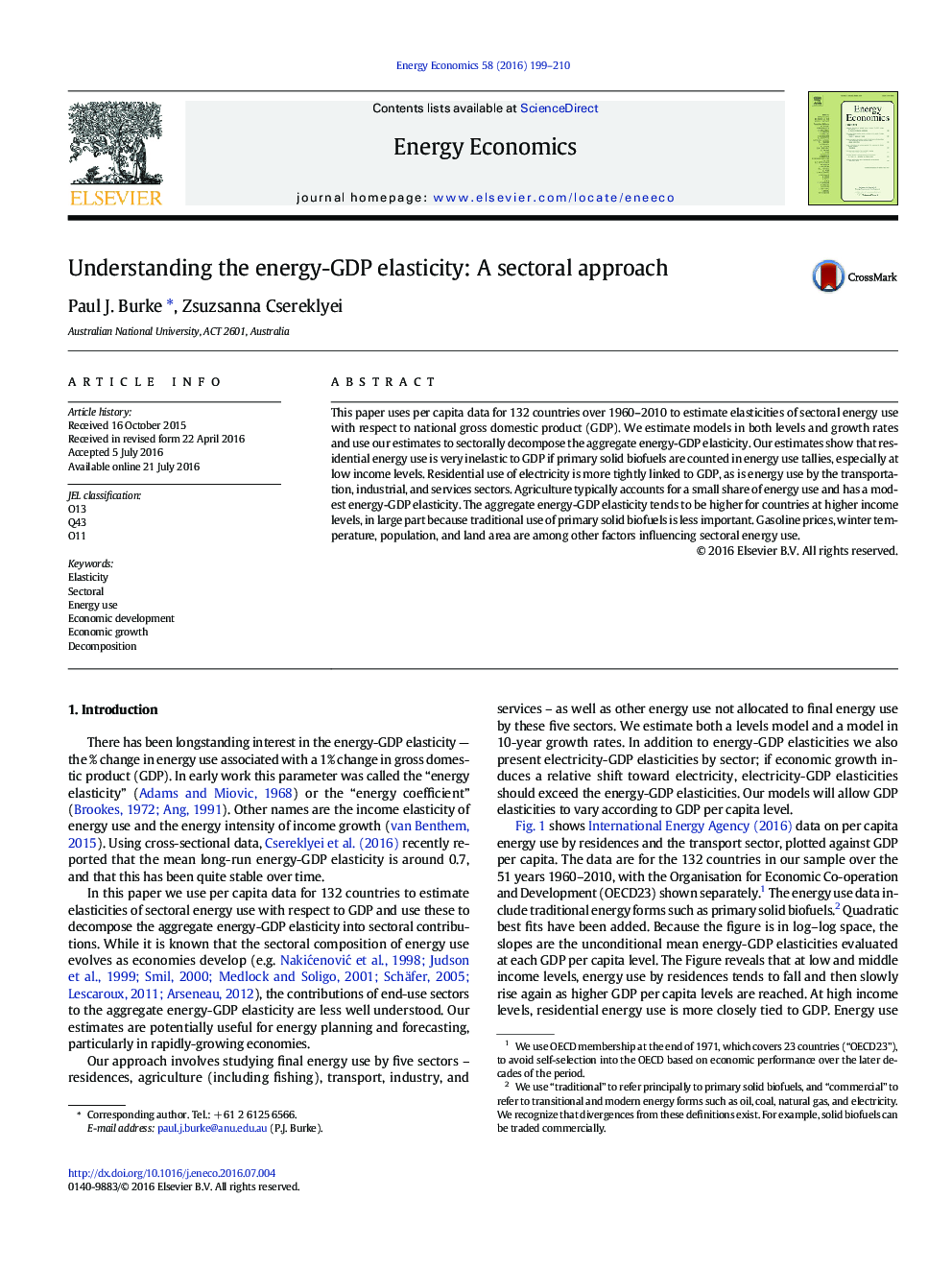| کد مقاله | کد نشریه | سال انتشار | مقاله انگلیسی | نسخه تمام متن |
|---|---|---|---|---|
| 5063945 | 1476706 | 2016 | 12 صفحه PDF | دانلود رایگان |
- We use a sectoral approach to decomposing the energy-GDP elasticity.
- Residences have a relatively low energy-GDP elasticity.
- The transport, industry, and services sectors have higher energy-GDP elasticities.
- The GDP elasticity is low for solid biofuels and relatively high for electricity.
- The energy-GDP elasticity is higher at high income levels.
This paper uses per capita data for 132 countries over 1960-2010 to estimate elasticities of sectoral energy use with respect to national gross domestic product (GDP). We estimate models in both levels and growth rates and use our estimates to sectorally decompose the aggregate energy-GDP elasticity. Our estimates show that residential energy use is very inelastic to GDP if primary solid biofuels are counted in energy use tallies, especially at low income levels. Residential use of electricity is more tightly linked to GDP, as is energy use by the transportation, industrial, and services sectors. Agriculture typically accounts for a small share of energy use and has a modest energy-GDP elasticity. The aggregate energy-GDP elasticity tends to be higher for countries at higher income levels, in large part because traditional use of primary solid biofuels is less important. Gasoline prices, winter temperature, population, and land area are among other factors influencing sectoral energy use.
Journal: Energy Economics - Volume 58, August 2016, Pages 199-210
